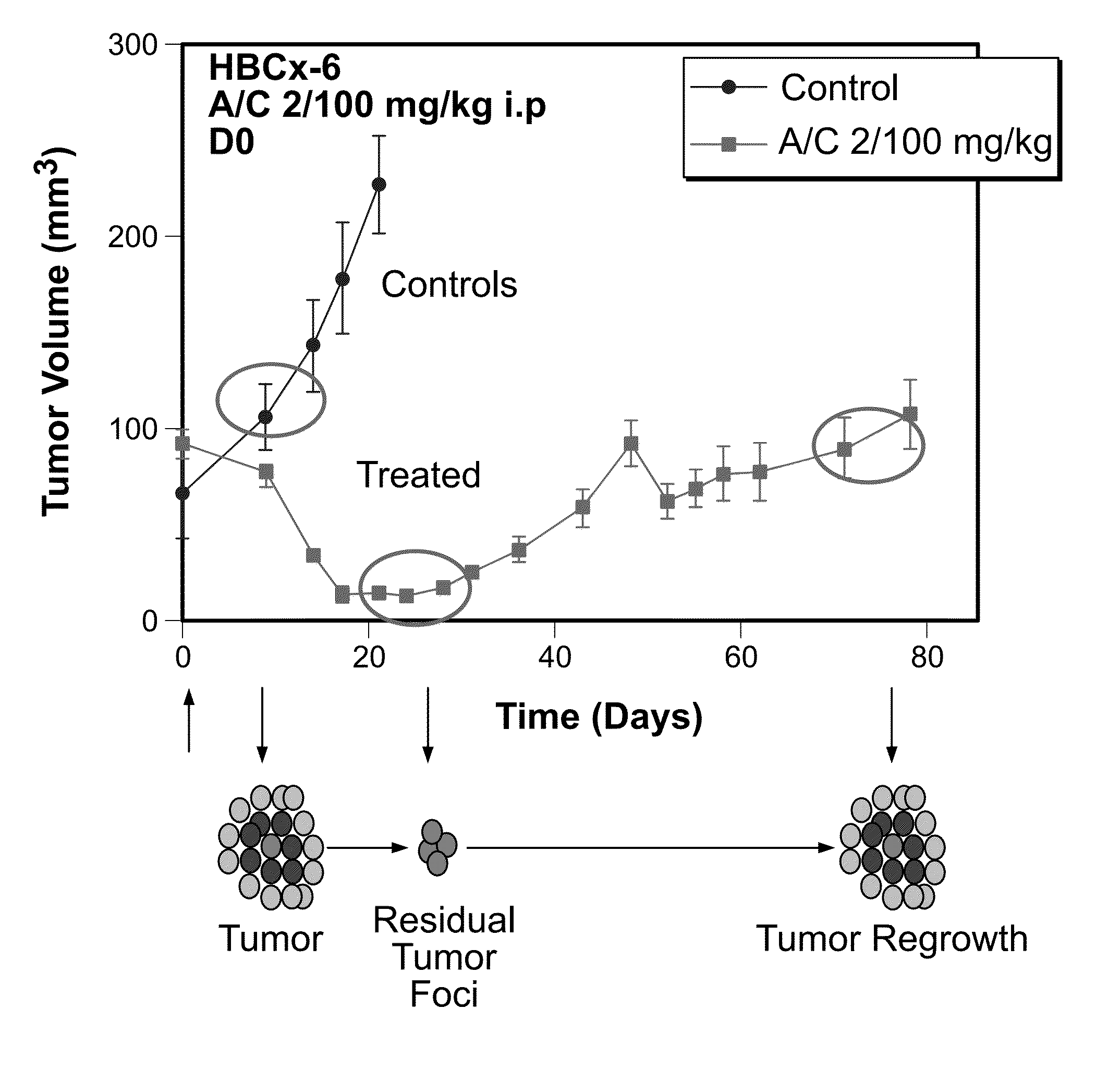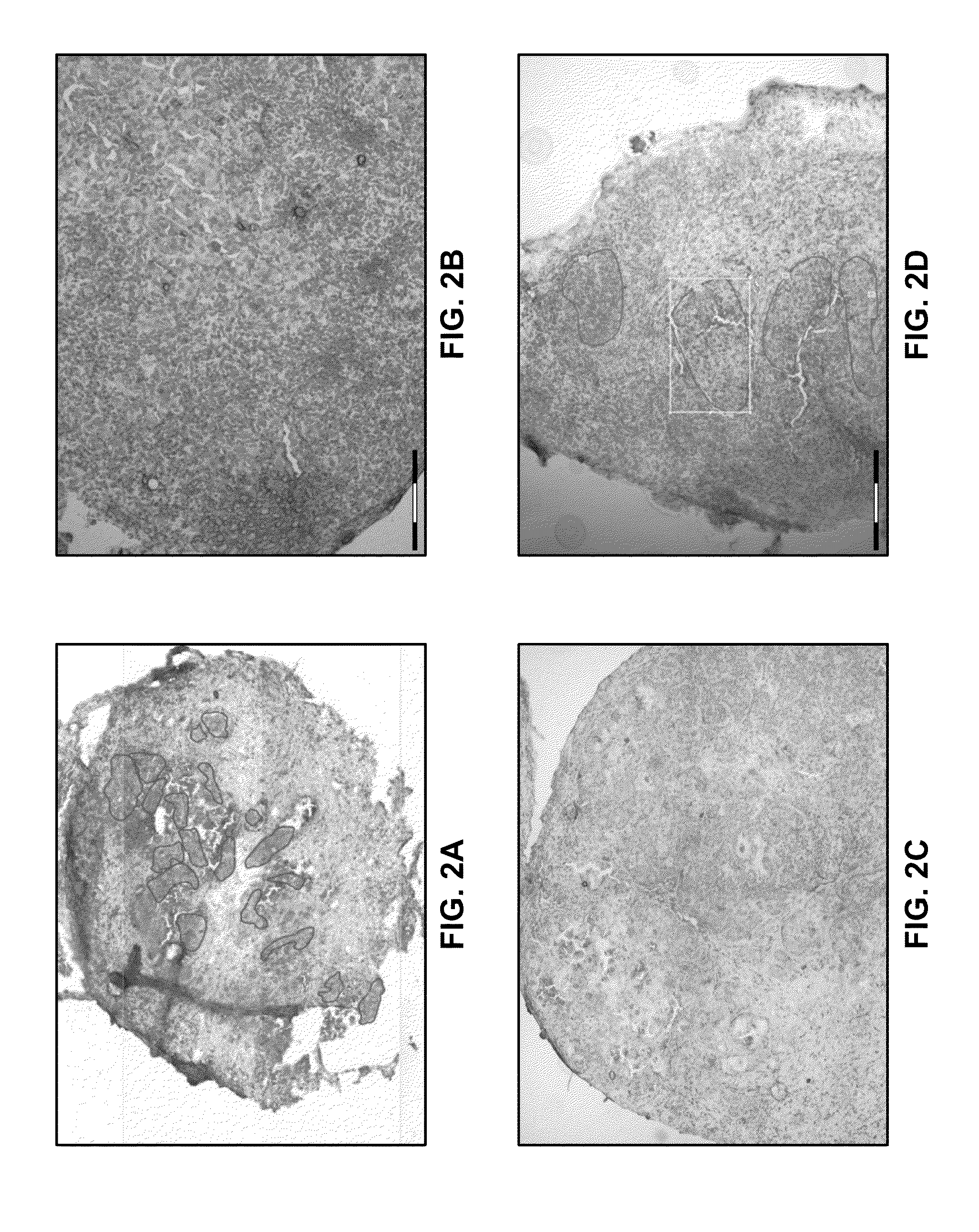Markers for cancer prognosis and therapy and methods of use
a cancer prognosis and cancer technology, applied in the field of cancer treatment, can solve the problems of relapse and treatment failure, difficult identification, and most currently available cancer treatments that fail to provide complete tumor elimination, so as to save cost and toxicity, eliminate administration, and avoid adverse side effects
- Summary
- Abstract
- Description
- Claims
- Application Information
AI Technical Summary
Benefits of technology
Problems solved by technology
Method used
Image
Examples
Embodiment Construction
[0037]The present invention provides a specific set of biomarkers that are differentially expressed in chemotherapy-treated tumors. Such biomarkers, as described in detail below, may be used in methods designed to predict the likelihood of a therapeutic response, including tumor regression, residual disease persistence and subsequent recurrence in cancer patients receiving chemotherapy.
5.1. Biomarkers of the Invention
[0038]To study the mechanisms underlying tumor regression, residual cancer disease persistence and tumor recurrence following chemotherapy, a model system was developed based on human patient tumor-derived murine xenografts (eg. breast, colon, lung, or brain tumor type). Several tumor models highly responsive to chemotherapy underwent complete macroscopic tumor regression, followed by tumor recurrence after a period of several weeks. Therefore, while chemotherapy was able to kill the majority of tumor cells, a small population of tumor cells survived chemotherapy and fo...
PUM
| Property | Measurement | Unit |
|---|---|---|
| Tm | aaaaa | aaaaa |
| temperature | aaaaa | aaaaa |
| temperature | aaaaa | aaaaa |
Abstract
Description
Claims
Application Information
 Login to View More
Login to View More - R&D
- Intellectual Property
- Life Sciences
- Materials
- Tech Scout
- Unparalleled Data Quality
- Higher Quality Content
- 60% Fewer Hallucinations
Browse by: Latest US Patents, China's latest patents, Technical Efficacy Thesaurus, Application Domain, Technology Topic, Popular Technical Reports.
© 2025 PatSnap. All rights reserved.Legal|Privacy policy|Modern Slavery Act Transparency Statement|Sitemap|About US| Contact US: help@patsnap.com



